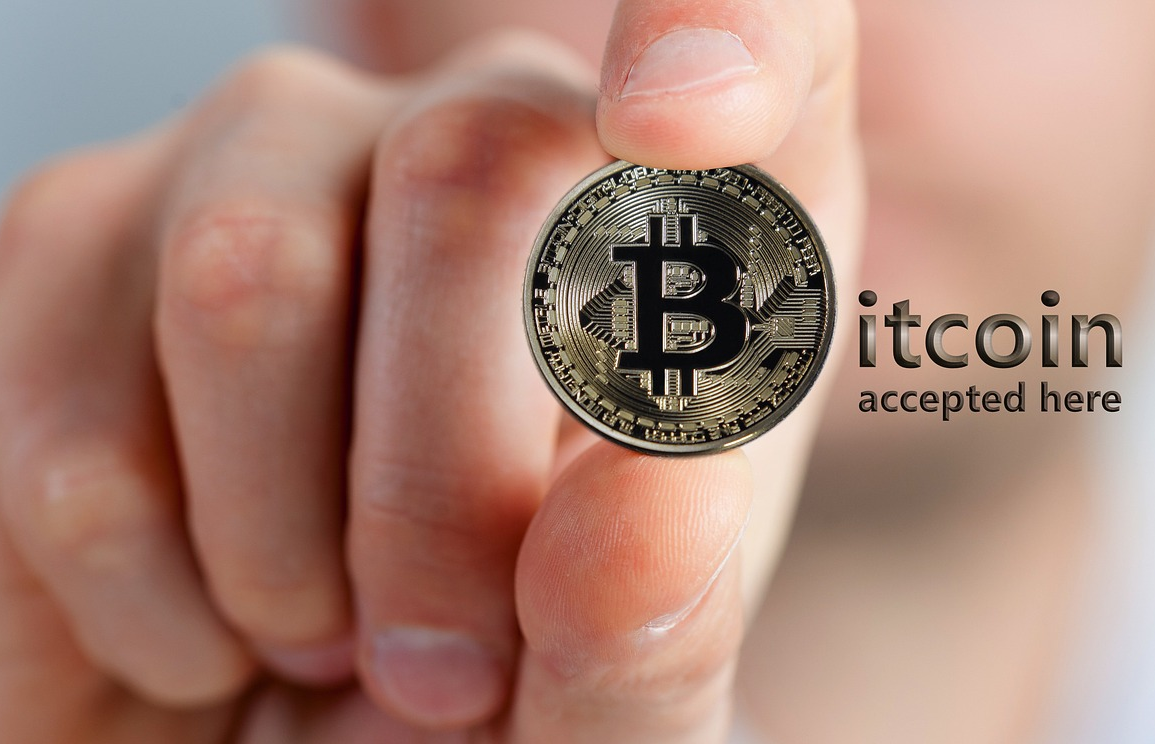Bitcoin is a type of currency that has become extremely popular in the last decade. It is a new type of currency that isn’t regulated by a single government or company. It creates a public system that anyone can access and prove that everything is Legitimate.
These are the reasons people have flocked to Bitcoin in the millions. It is an opportunity to make money, create a better system, and help everyone in the world out.
However, with so many people moving to Bitcoin, Bitcoin transaction times have increased. Read on to find out how long it might take you to get your Bitcoin.
Related: How to Pay with Bitcoin
What Is a Bitcoin Transaction?
To keep things simple, a Bitcoin transaction is simply one person requesting Bitcoin from another person. Once the request is out on the internet, the person who is giving the Bitcoin away gives it to the requester.
How this is done is by the requestor providing the giving person an address. Once the person giving the Bitcoin away has the address, they can simply deposit the Bitcoin into that address for the requestor to pick up at any time.
The reason that the Bitcoin is safe is that the requestor has a key to the address that no one else in the world has. So the requestor is the only one who can access the Bitcoin they were provided.
The Bitcoin that was given is then placed onto the BlockChain, where the requestor can pick it up at any time. The BlockChain is just a public area on the internet where all of these addresses are stored. The transaction time comes into play when the requestor wants to pull the Bitcoin off of the BlockChain.
Interested in getting started with bitcoin? Check out Blockcard for more information
How Are Bitcoins Transferred?
Transferring Bitcoin is a little more complicated, but it can be broken down into a few steps to keep things as easy as possible to understand. You will have inputs, transactions, and outputs in the transfer process of Bitcoin.
When someone is attempting to exchange Bitcoin or give Bitcoin to someone else, we have a transaction that takes place between multiple parties. The person sending Bitcoin to someone else sends it out in different blocks. This is the Bitcoin being input into the BlockChain.
Once the Bitcoin blocks are in the BlockChain, it is free for the person who has the key to the address of that Bitcoin to pull it off of the BlockChain. For this to be done, you have to pay someone to mine the blocks of Bitcoin off of the BlockChain.
For someone to facilitate this transaction and transfer the Bitcoin, the block has to be verified by the miner to ensure the transaction wasn’t tampered with or invalid in any way. Since the miners are taking their computing power to ensure that your Bitcoin is transferred successfully and safely, they ask for a fee to facilitate the transaction.
This fee is typically a very small percentage of the total transaction of Bitcoin. The person sending the Bitcoin can make this fee larger or smaller depending on how much they want to reward the miner for processing the transaction.
Once the transaction is verified by the miner, the recipient of the Bitcoin can pick up their Bitcoin and store it in their online or offline wallet off of the BlockChain. This is considered the output portion of the transaction because the Bitcoin is leaving the BlockChain.
Check out Blockcard for more information about bitcoin and cryptocurrency
How Long Does It Take to Send Bitcoin?
On average, the confirmation time for a BTC payment on the Bitcoin network is about ten minutes. However, the transaction time can vary widely based on a broad range of circumstances.
The length of time is affected by factors like the hash rate, transaction fees, and network activity. During times when the Bitcoin network is congested, there will likely be a backlog of transactions in its mempool (more on that next).
That backlog results in users paying more in transaction fees to send their BTC faster. In April 2021, this congestion happened, shooting Bitcoin transaction fees up to $59.
About Bitcoin Mempools
The Bitcoin mempool is a record of all BTC transactions that a crypto miner hasn’t yet validated. These unvalidated transactions get added to the next block on the BTC blockchain. Then, that mempool is stored (temporarily) on every node in the network.
Each mempool transaction gets cleared periodically when a new block gets added to the blockchain. All pending transactions waiting in mempools will get cleared and processed when they meet the threshold for the minimum transaction fee.
Transactions with the lowest fees will typically have to wait for more than a single block into the mempool until they get confirmed and processed.
Bitcoin Transaction Verification
Did you know it’s possible to wait hours to complete a transaction on the BTC blockchain? In some ways, using cryptocurrency is similar to driving down the freeway; when there’s a lot of congestion, whether on the freeway or the blockchain, everything slows down.
Paying higher BTC transaction fees is like passing through traffic with a personal police escort, jumping first in the queue, and effectively cutting your wait time.
When you’re sending Bitcoin and want to send it fast, you need to incentivize the miners on the blockchain to include your transaction when the mempool is full. Unfortunately, block sizes are fixed (1 Mb), and there’s a limit to how many miners there are; you have to pay high fees if you want your transactions to get first-class treatment.
How Long Does It Take to Complete a Bitcoin Transaction?

This is more difficult to answer than you would think. A person would hope that their Bitcoin transaction would happen in a matter of seconds, like technology demands nowadays. That is not the case, though.
You can see a transaction take anywhere from a few minutes to a few days depending on several factors. The most important factors are how busy the BlockChain is at the time (network activity) and the fee that the miners will get for verifying the transaction for the recipient.
The standard for mining and confirming a Bitcoin transaction is to process 6 different confirmations to ensure that the Bitcoin is safe. This is typically referred to as 6 different blocks that have to be mined.
The average time for mining a block is 10 minutes, and when 6 blocks have to be mined for one transaction, it means it will take an average of 60 minutes to process a full Bitcoin transaction.
What will speed this time up the most is if you apply a higher fee to the transaction. A higher fee means that miners get more money for processing your 6 blocks, so you will get more miners processing your information this way.
The reason it can take a few days is if you have applied a very small fee to the transaction, and the network is backed up due to high activity. The more activity there is, the more chance that someone is offering a higher fee than you to process their transaction.
So, if you need to speed up your transactions, you can simply increase the fee you’re paying to the miners and it will receive a higher priority!
How Many Confirmations Do You Need for a Bitcoin Transaction?
When a new transaction gets certified and included in a block, it counts as one confirmation. After an average of ten minutes, another block gets created with that transaction, counting as two confirmations. Services will require verification between one and three (or more) BTC transactions.
How Long Does Bitcoin Transaction Confirmation Take?
Each Bitcoin transaction typically goes through multiple confirmations on the blockchain before getting fully cleared. It works this way because there’s a risk that the cryptocurrency could get spent twice, or an unconfirmed transaction could get reversed. Confirmation takes place each time a new block is created.
If you’re trying to transfer large amounts of cryptocurrency, many companies will require more confirmation. For example, they might require six confirmations, which would take about an hour during regular transaction times.
How Do You Check Bitcoin Transaction Times?
Tools like Statista and Blockchain.com can quickly give you the estimated average time that it will take to complete a Bitcoin transfer or transaction. With these sites, you can also find guidance on how much transaction fees you should add, often denoted by satoshis; 100,000,000 satoshis is equal to one Bitcoin.
If you submit your transaction with lower fees than necessary, you risk upsetting Bitcoin miners, which becomes a problem. They’ll likely ignore your fees in favor of people offering higher ones, and your payment may end up in a ridiculously long list of other unconfirmed transactions. However, in this case, you don’t need to worry too much; it will still get processed once there’s a lull in the blockchain and the miners don’t have anything else to do.
How Do You Check if the Transaction Is Verified?
If you have a pending transaction and want to check if BTC miners have validated it, you can do so with a blockchain explorer. It’s typically as simple as inputting your bitcoin transaction hash, and you’ll get to see the status of the transaction and whether or not it’s valid.
How Can You Speed Up Bitcoin Transactions?
The long confirmation times that Bitcoin transactions and transfers see can cause some uncertainty for many BTC enthusiasts. One worry is that the blockchain won’t have the capability to cope with rising demands in the future, which is why Bitcoin Cash was created.
Other than increasing your transaction fees to jump ahead in the queue, there is another way: you can set up your transfer during non-peak hours to avoid blockchain congestion. Using Blockchain.com’s explorer, you can see the mempool size chart that shows when the number of transactions awaiting confirmation is at their lowest.
Will Bitcoin Transactions Ever Get Faster?
Some scaling solutions aim to solve the transaction time problem by adding a layer on top of Bitcoin’s blockchain to speed up the times. Furthermore, they plan to introduce the ability to make micropayments that are quick and cheap to solve the scalability issue of BTC.
Other alternatives include using different cryptocurrencies to avoid Bitcoin fees. For example, Litecoin and Ethereum are both known to have faster transaction and confirmation times. In addition, if you take this route, it’s easy to exchange BTC for other assets on any exchange.
For low-value transactions, sending Bitcoin can be almost instant, but it can take hours (or days) when sending large amounts. A general rule of thumb is to wait until you get six confirmations, which should take about an hour before assuming the transaction is final.
If you want to send your BTC as fast as possible, you’ll want to include higher transaction fees so that miners will prioritize you over others that offer lower fees. Unfortunately, Bitcoin transactions will never be instant, but merchants that accept transactions without confirmation do exist.
Related: How to Buy Bitcoin Cash
Simple or Not so Simple?

Bitcoin can be as complicated or simple as you want it to be. A lot of people interact with Bitcoin purely by buying and selling goods for Bitcoin. They know the value of Bitcoin and are happy to take payment from a decentralized currency.
What is important to everyone, though, is the Bitcoin transaction time for them to receive their money. Decreasing this time is important for the longevity of Bitcoin because no one wants to wait a week just to receive payment for a job they did.
If you are interested in how you can start using and engaging with Bitcoin, feel free to read more of our blogs or contact us!
Related: Everything You Need to Know About How to Sell Bitcoin





